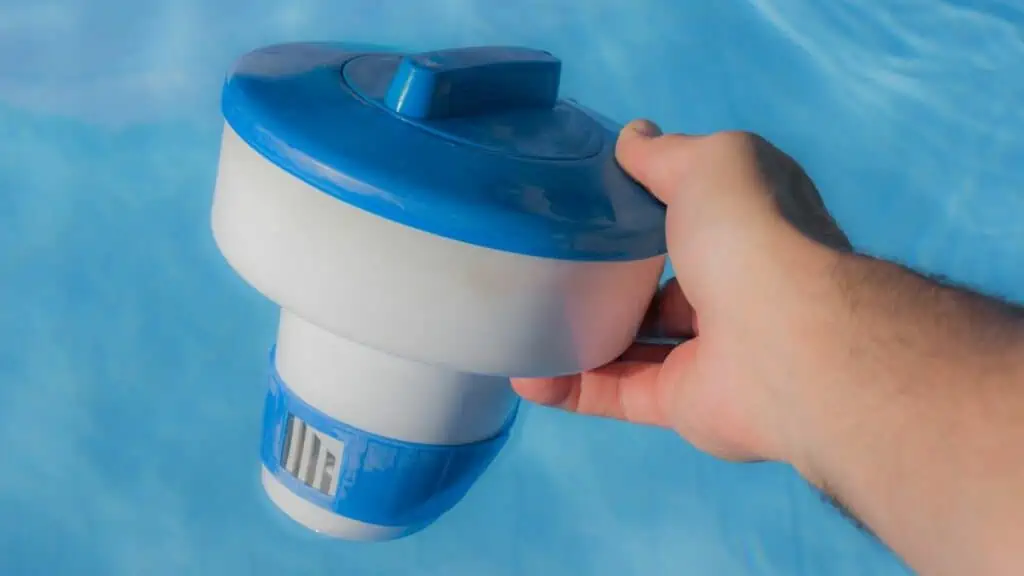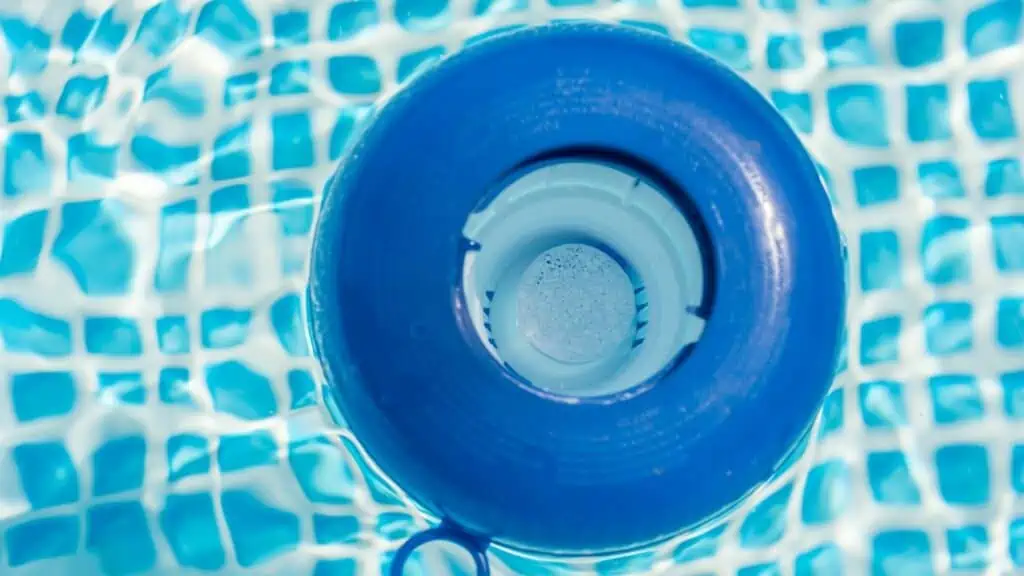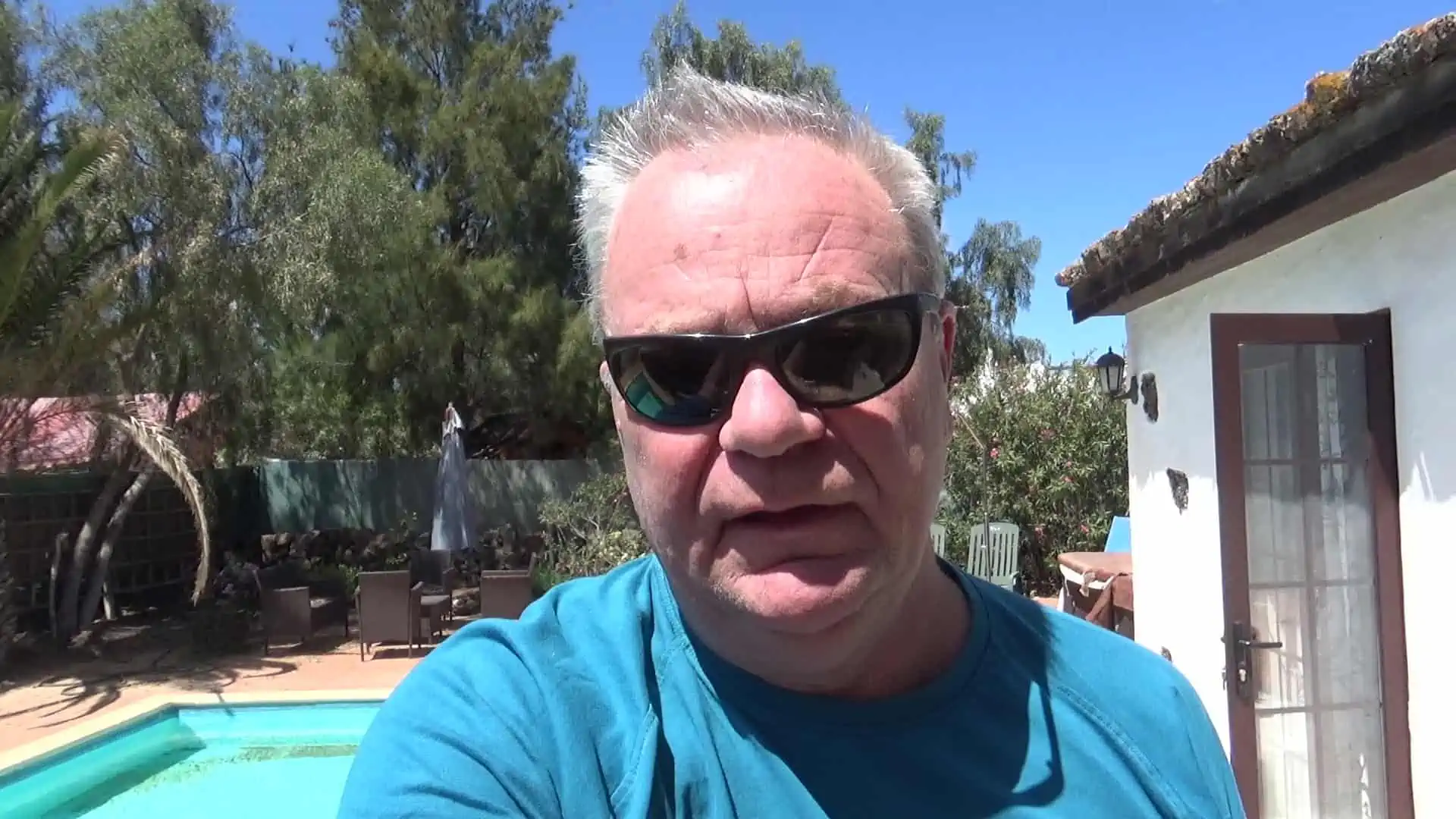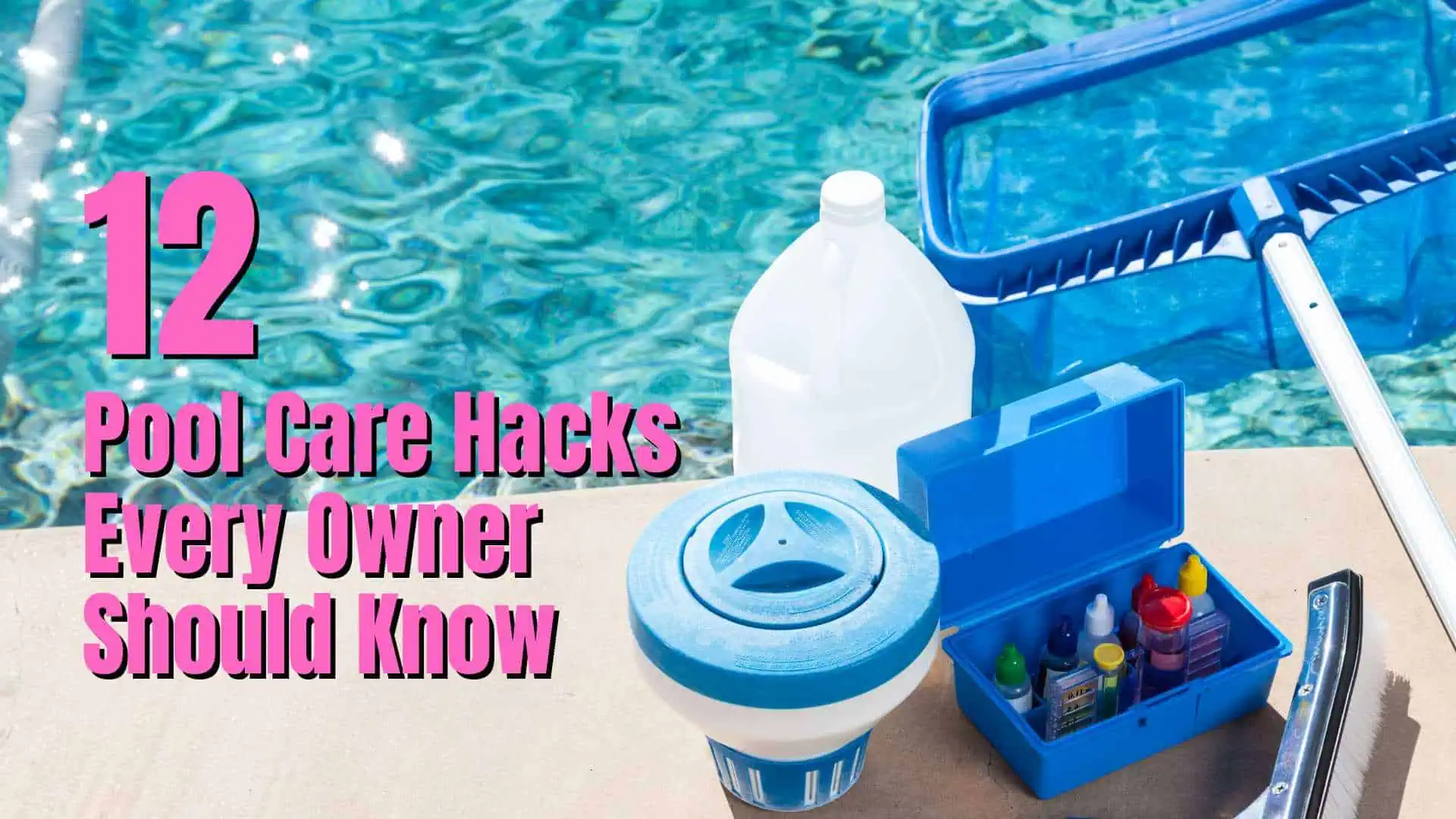Utilizing a floating chlorine dispenser in your pool can be an efficient and effortless way to maintain proper chlorine levels, ensuring your pool remains safe and clean. These dispensers are simple to use and can make a significant difference in your pool maintenance routine.
Well, we’ll be going over:
- The step-by-step process of setting up and using a floating chlorine dispenser in your pool.
- Tips for adjusting the amount of chlorine released and ensuring even distribution throughout the pool.
- Best practices for maintenance and safety when using a floating chlorine dispenser.
Now we will show how a floating chlorine dispenser can simplify your pool maintenance while effectively keeping your pool water sanitized and ready for a refreshing swim.


Using a floating chlorine dispenser in a pool is a convenient way to maintain sanitized water. Here’s a step-by-step guide:
- Test pH Level: Ensure the water’s pH level is between 7.2 and 7.6.
- Open the Dispenser: Twist open the lid and access the area for chlorine tablets.
- Insert Tablets: Place 2-3 three-inch chlorine tablets inside, then securely close the lid.
- Adjust the Base: Open the base slightly for chlorine release; halfway is recommended for even dispersion.
- Immerse in Water: Submerge the dispenser to release air, allowing it to float properly.
- Use a Leash (Optional): Attach a leash to keep the dispenser in a specific pool area.
- Monitor Water Chemistry: Regularly test the chlorine level, adjusting the dispenser as needed.
Remember to remove the dispenser during pool use and replace tablets weekly or as needed. Floating dispensers offer easy, low-maintenance pool chlorination but should be used with caution around children.
Floating pool dispensers: A step-by-step guide
Without further ado, we’ll get into it and let you in on our mini guide that will tell you all you need to know about using a floating pool chlorine dispenser.
Let’s dive right in!
Step #1: Test the pH level
First, you need to ensure the water chemistry is up to scratch. The pH level should be between 7.2 and 7.6 which is perfect for swimming.
Step #2: Open the dispenser
Remove the vessel’s lid by twisting and you will immediately find a small area where the chlorine tablet can be inserted. Some chlorine floaters come with a detachable mesh cup which is handy for capturing big chunks of the tablet. This ensures that chlorine is released equally.
Step #3: Insert the tablets
Floating chlorinators usually take three-inch chlorine tablets (hot tub tabs are much smaller). Once you have placed this inside the dispenser, you must replace the lid and twist it until you hear a small ‘click’.
How many chlorine tablets in the floater? Generally you wouldn’t put more than 2-3 chlorine tablets in at a time.
Step #4: Open the base slightly

To release chlorine into the water, the dispenser’s neck, or base, must be opened slightly. The more you twist, the wider the opening will be and the quicker the tablets will dissolve.
We recommend opening these slats about half way so that the chemicals are slowly and evenly dispersed.
Step #5: Immerse into the pool water
You must fully immerse the dispenser under the water for a few seconds to dispel all of the air from the container. Then, it will float with only the top half above the surface.
Step #6: Secure with a leash (if needed)
Most floating chlorine dispensers come with an optionable lead or leash. This is convenient for ensuring the vessel stays in one area of the pool, which allows the chlorine to disperse evenly. I preferred to let mine free flat to distribute the chlorine more evenly.
Step #7: Monitor the water chemistry
Test the chlorine level every day for at least a week and adjust the base of the dispenser accordingly. It is also a good idea to attach it to the other side of the pool after several days, or you can let it float freely. You will also need to add new chlorine tablets after a week or so.
Types of floating dispensers
For some reason (to paraphrase Henry Ford) they come in every color you want, as long as it is blue. That is apart from some of the novelty versions which may have a duck, a dolphin or even an alligator on top.
I have the one above which has a high capacity and I tend to use it when I don’t have the solar pool cover on (yes, it’s blue) – Large Capacity Floating Chlorine Dispenser
Numerous novelty types of pool chlorine floater range from crocodiles to ducks or dinosaurs. My particular favorite is a turtle from WWD Pool.
Poolmaster makes a version with a Mallard duck on top that is quite realistic too. Check out their full range of novelty chlorine tablet dispensers available here on Amazon Poolmaster Chlori-Critter Chlorine Dispenser for Swimming Pools and Spas.
How many chlorine tablets in floater?
I normally put 2 or 3 tablets in a chlorine floater, when I use one. I monitor them and when they have all dissolved I retest the water to see if I should add any more.
If you are going away for a few days, or a bit longer, then you can fill it so that the chlorine levels will be maintained while you are not at home.
Pool Care Handbook and Video Course
When I bought my house with a swimming pool, I knew absolutely nothing about pool care. I just winged it for a while, making many mistakes along the way.
Fortunately, I was recommended Swim University’s Pool Care Handbook and Video Course. I bought it and it was an absolute game-changer.
It was the best money I spent that year. I learned everything from basic cleaning to advanced troubleshooting. Swim University offers a no-quibble refund policy too so what do you have to lose?
Pros and cons of floating chlorine dispensers
So, we guess you’re starting to like the idea of a floating chlorine feeder (or else we would have lost you by now!). Let’s get into the nitty-gritty and take a peek at the advantages and disadvantages of using one.
Pros of floating chlorine dispenser for pool
Here are what we think are the most notable aspects of using a chlorine dispenser.
Easy to use
There’s no denying that these small chlorine floaters are incredibly easy to use for anyone. All you need to do is add chlorine tablets, drop it in the pool water and you’re good to go. What else could be easier?
Cheap
Getting hold of one is fairly easy and they are much cheaper than automatic chlorinators. You can purchase a chlorine dispenser from around $10 from most retail outlets and online platforms such as Amazon and Ebay. Some pool owners even like to go the extra mile by making their own dispensers out of plastic bottles!
Low maintenance
One of the main benefits of using a chlorine dispenser is that they are extremely low maintenance. Once you have added a chlorine tablet, you can get on with the rest of your day while the chlorinator gets to work. If the dispenser chips or becomes unusable for whatever reason, acquiring another one doesn’t cost much.

Cons of floating chlorine dispensers
Unfortunately, every product has a downside. So, what could be bad about this one?
Difficult to use with solar pool covers
I used floating dispensers too before I bought a solar pool cover but with the pool cover in place they get stuck along the side by the cover as they cannot freely float around.
You can purposely push the chlorine floater under the pool cover, and it will still work, although the chlorine will be dispensed in one place.
Should be removed when swimming
It is recommended that floating dispensers must be removed from the swimming pool before anyone enters the water. The harsh movement of the water when the pool is in use disrupts the way the chlorine is released from the dispenser. This can delay the water from being sanitized properly leading to an imbalance of pH levels.
I must confess that I never removed mine.
Unsafe for small children
Floating feeders can be quite appealing to babies and small children as they can be purchased in an array of colors and patterns. This can be a risk to young children as the chemicals inside are extremely toxic if ingested.
Do you leave chlorine floater in pool overnight?
You can leave the floating chlorine dispenser in the pool overnight, even with your pool pump off, as it will continue to float around gradually dispensing chlorine.
If there is any breeze during the night, this will move it around the pool, distributing the chlorine more evenly.
That leads me on to do you leave chlorine floater in pool all the time? There is no real harm in this, even if it is empty.
Alternative ways to add chlorine to your pool
There are other ways to add chlorine to your pool without using a dispenser which include the following:
Chlorine granules
Floating chlorine dispensers are ideal if you don’t have time to do it manually. However, some find that floating feeders take longer to sanitize the water and aren’t as reliable as doing it yourself. Some people even like to add chlorine granules to dispensers to speed up the process!
The correct way to use granular chlorine is to dilute in at least five gallons of pool water before pouring it in. If added directly, it has the potential to damage and stain the pool floor and walls.
Pool skimmer
Chlorine tablets, also known as bromine tablets, can be added directly into the skimmer basket. When the pool pump runs, the water floats in through the filter and back into the water, carrying enough chemicals to sanitize the pool. Read my post Can you place chlorine tablets in a pool skimmer? for more information.
Automatic chlorinator
Automatic chlorinators, or feeders, work with the pool pump and filter to deliver exact amounts of chlorine to the water. They are typically more expensive than floating chlorinators, however, they also require less maintenance and can be used when the pool is in use (unlike floating chlorinators).
FAQ Section
If you still haven’t found the answer to what you’re looking for, look at our trusty FAQ section to see if you can find it.
Can you swim with chlorine floater?
Swimming with a chlorine dispenser in the pool will neither do you or the floating chlorine dispenser any harm.
Do you leave chlorine floater in pool while shocking
During shock treatments, it is recommended to remove the chlorine floater from the pool temporarily. Shocking the pool with high levels of chlorine can cause the tablets to dissolve rapidly, potentially leading to imbalanced chemical levels. Once the shock treatment is complete, you can re-introduce the chlorine floater to maintain a clean and clear pool.
How long does it take for chlorine tablet to dissolve?
Chlorine tablets, or pucks, can take around seven days to fully dissolve in a swimming pool. However, a hot tub can take slightly less time (around 3-7 days). This is highly dependent on the water temperature, water flow and usage.
How many chlorine tablets does a swimming pool need?
This depends on the volume of your pool. A good rule of thumb is to add one chlorine tablet for every 5000 gallons of pool water. Therefore, the easiest way to do this is to round up to the nearest 5000 gallons.
For example, if the pool volume is 25,000 gallons, you would add five chlorine tabs. If your pool holds 8,000 gallons, you would use two tabs. Easy, right?
Can I add chlorine tablets directly to the pool?
Chlorine tabs are designed to dissolve slowly in water, but manually dropping one into the pool can wreak havoc on the liner and cause staining.
Leaving a tablet on the pool floor means the chlorine is dispersed more slowly and unevenly than it would if in a dispenser or a pool skimmer. Therefore, adding them directly into the pool is a waste of chlorine and you will most likely need to add more chlorine products.
Are floating dispensers good for a hot tub?
Yes. If opting for a floating feeder in a hot tub, you will need to use a different kind of chlorine puck (tablet). A 1″ chlorine tablet is the perfect size, the bigger tablets are for use in swimming pools (but you can break them into smaller pieces).
I use a smaller floating dispenser when adding chlorine tablets (actually small pieces rather than whole tablets) to my hot tub as there is no basket in the skimmer system to use as an alternative.
Smaller hot tubs require between 1 and 3 1″ chlorine tablets, whereas larger tubs require between 3 and 5. However, you will likely need to make small adjustments to these amounts when testing the chlorine levels.

I have had hot tubs for over 20 years and a pool for the last 10 years. I had to learn how to clean, maintain and fix them the hard way. Since then I have helped many friends and neighbors with their pools and now I want to share everything I have learned with you. About Me







